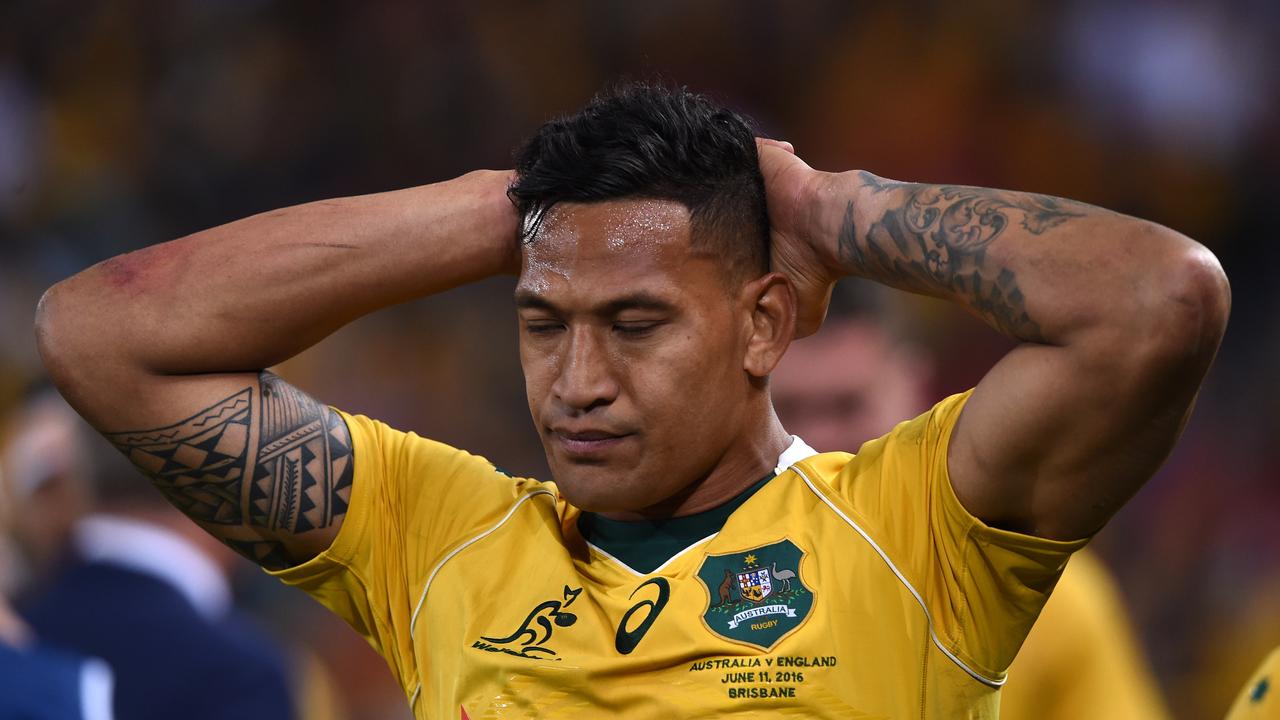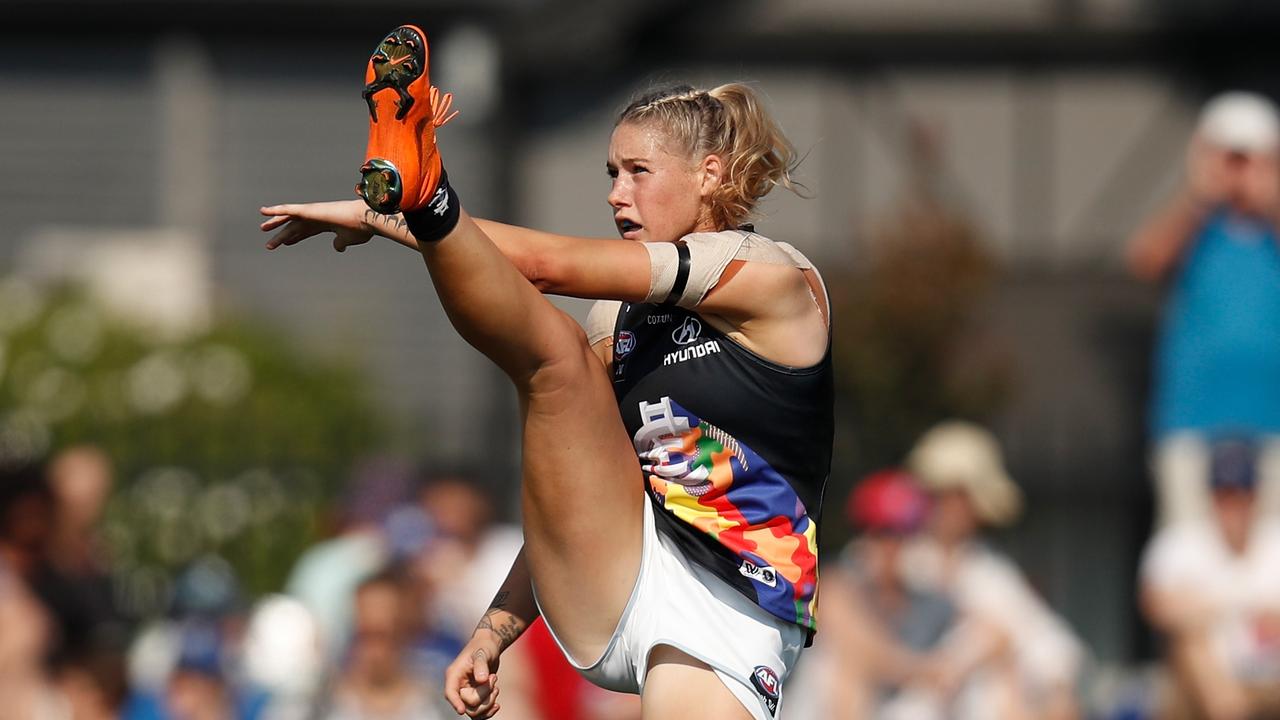Women’s AFL debut latest proof of our love affair with women’s sport
Biggest triumph in a packed weekend of sport: capacity crowds watching top quality performances in all four games in the first round of the new AFL women’s competition. Biggest shock: the Australian women’s team’s gut-wrenching semi-final loss in the Sydney sevens. Biggest disappointment: hard to separate the bizarre outcome of the Mundine-Green fight and the flat-as-a-tack Auckland Nines.
In other words, female athletes are front and centre in Australian sport and in many cases their stories are more interesting than the exploits of their highly paid male counterparts.
Ten years ago this week I slipped into the sports editor’s chair at The Australian and without doubt the biggest change in the Australian sporting landscape in that decade has been the rise of women’s sport. In 2007 there were few female superstars in Australian sport: Olympic athletes largely, who had day jobs and got by on passion.
Our female cricketers, soccer players, even netballers were largely unknown and playing for the love of it. Completely out of the media spotlight. Women playing Australian rules, rugby league and rugby union did so in front of tiny crowds made up mostly of their mums and dads. Television coverage? Forget it.
I was often told that I should cover more women’s sport because it was “the right thing to do” — not because anyone was actually interested in reading about it.
Even in 2013, The Australian’s list of the top 50 most influential people in Australian sport included only three females — and one of them was Black Caviar.
It’s not entirely clear where, when or how all that began to change, but Ellyse Perry probably had a fair bit to do with it. The emergence of a bright, articulate young woman with genuine talent in two sports — cricket and soccer — caught the Australian imagination. Strong performances by women’s international teams such as the Matildas boosted the profile of female athletes.
And the surge of broadcast money into several sporting codes meant there was more cash available to support elite women’s sporting competitions. Cricket Australia took things to the next level by boosting the salaries of female players so that many of them could concentrate on playing and training full-time.
The result is a series of vibrant national women’s leagues, not least of them the women’s AFL competition launched at the weekend with capacity crowds and television audiences topping 1 million. It follows the women’s crowd-pulling domestic Twenty20 competition, the WBBL, and the highly successful W-League.
The women’s sevens team, despite Saturday’s disappointment, is riding a wave of success after winning a gold medal in Rio and netball continues its inexorable rise, with the new eight-team ANZ Championship beginning this month.
The household names of Australian sport have been joined by the likes of Perry and Meg Lanning in cricket, Lisa de Vanna in soccer, Sharni Layton and Laura Geitz in netball, Charlotte Caslick and Ellia Green in women’s sevens and Mo Hope and Daisy Pearce in AFL. These days I am including coverage of female athletes in the sports section because it deserves to be there, not because it’s the right thing to do.
Women are providing sporting spectacles in a range of codes every bit as entertaining as men. In fact, because women’s sport is generally more about skill and less about raw power, they are often more entertaining. And there is a real appeal in the fact that female athletes are considered to be competing for the love of the game rather than the cash.
Australian girls — just like Australian boys — can now dream of playing the sport they love at the highest level.




To join the conversation, please log in. Don't have an account? Register
Join the conversation, you are commenting as Logout